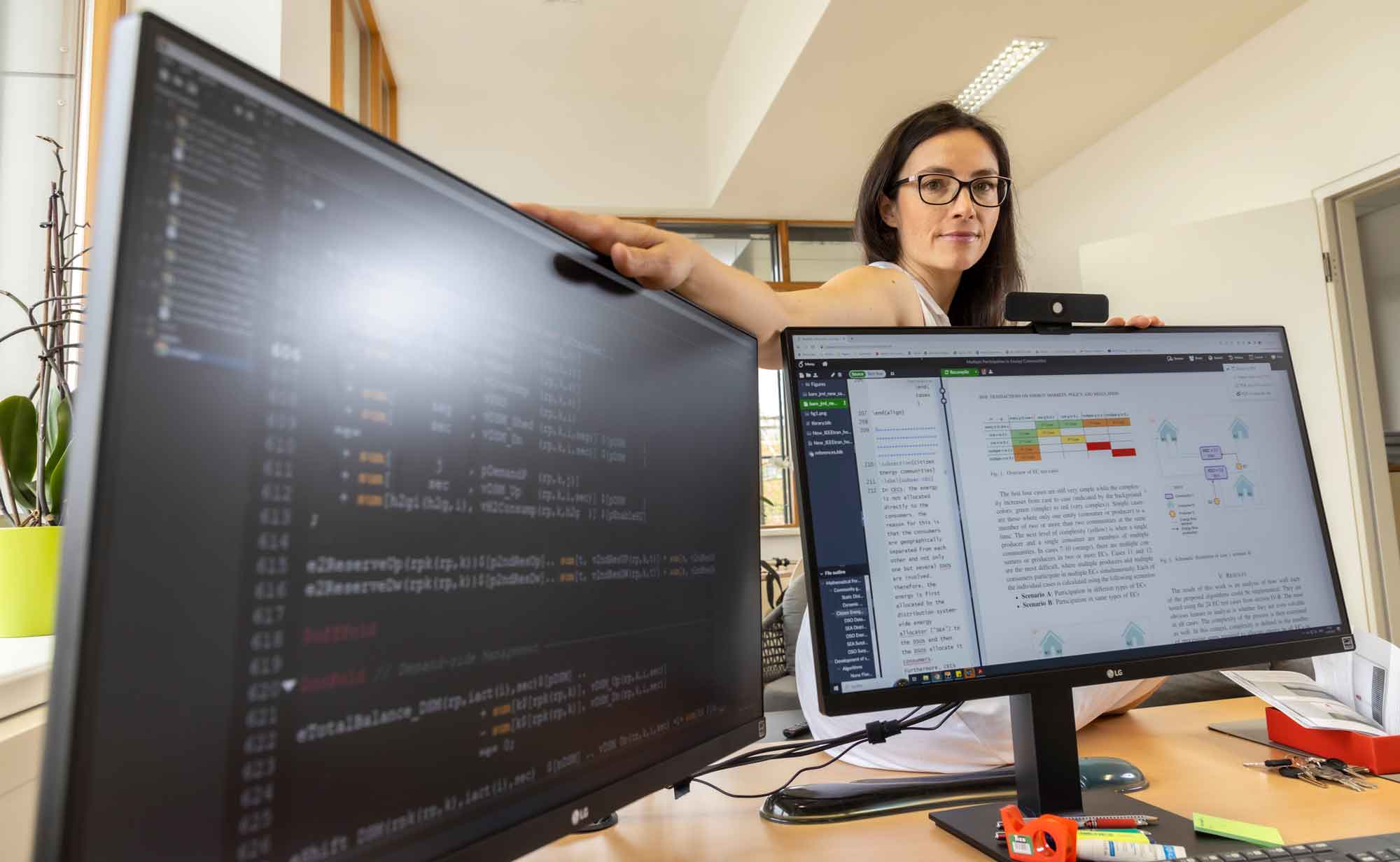The energy industry is faced with some enormous changes. How can we manage the energy transition and become climate-neutral by 2040? Researchers at the ENERGETIC Research Centre at Graz University of Tecnology (TU Graz) are focusing on this very topic and are developing innovative solutions for the energy system of the future.
Sonja Wogrin, who was named Austrian of the Year in the “Climate Initiative” category by the daily newspaper “Die Presse” in 2023, heads up both the Center and the Institute for Electricity Economics and Energy Innovation at TU Graz. Her area of expertise is modelling and analysis of energy systems. “I’ve always loved solving puzzles and problems”, says Wogrin, “which is maybe what motivated me to study Technical Mathematics at TU Graz. I discovered the topics of energy and electricity markets as part of my dissertation in Spain, during a time when the expansion of renewables was really booming.”
The energy transition towards a 100% renewable energy supply requires a comprehensive transformation process. Lots of different components and numerous different players must collaborate as effectively as possible in the energy system of the future in order to ensure a secure and sustainable supply. It is precisely this complexity in the energy system that Sonja Wogrin finds so exciting about her field of research. “The electricity system is a marvel of technology”, says Wogrin, “because there needs to be a balance between supply and demand of electricity at all times. As a mathematician, I thought to myself at the time ’wow, that’s it‘. The energy sector is one area that really covers all bases, from technical challenges to uncertainties such as the weather, regulatory framework conditions as well as numerous political, economic and social aspects.”
Analysis of decarbonised energy systems
What happens in the energy system when large quantities of renewable energy sources need to be generated and integrated and how does this transformation affect load flows, energy distribution and storage systems, as well as the energy markets? “The energy systems are so highly complex because everything is always so interconnected”, explains the expert, “and the question of where the expansion of renewables takes place and what technologies and framework conditions are needed for this has a major impact on the development of the overall system.” Reliable modelling of these complexities is necessary in order to be able to assess future requirements and make the right investment decisions. Sonja Wogrin and her team at TU Graz are developing state-of-the-art optimisation and simulation models for the operation of integrated sector-coupled energy systems. These models form the basis for creating techno-economic analyses for climate-neutral energy systems.
InfraTrans 2040
The InfraTrans 2040 project1 was recently completed in which three expansion scenarios for the energy infrastructure in Austria in the areas of electricity, gas and heat were developed and comprehensively evaluated both from a qualitative and quantitative point of view. All the scenarios clearly show that electricity consumption will increase significantly by 2040 and that a massive expansion of renewable energy sources will definitely be necessary in order to achieve the national climate targets. “We currently have electricity consumption of around 70 terawatt hours in Austria and this could double by 2040, which would mean that it would then be 140 TWh. Nobody has a crystal ball, but from my point of view increased expansion of renewables is a no-regret measure,” says the project manager with conviction.
The project team’s objective was to analyse three scenarios, each with a different focus (import/export focus, sector coupling and energy efficiency) and to derive possible infrastructure expansion plans from these. Several models (LEGO, HyFlow, ASCANIO) were designed specifically for the respective investigation purpose and coupled with each other. Then a multi-criteria analysis and evaluation was carried out in order to systematically compare technical, techno-economic, macro-economic and ecological aspects with each other and to determine the respective dependencies.
“The basic motivation behind the scenarios was to generate a spectrum and show that there are several options available for us to achieve our objective. Expanding renewables makes sense in all of the options. With this in mind, we also analysed, for example, the necessary expansion of power lines in the transmission grid”, explains Wogrin. The simulations showed that a massive expansion of renewables could result in grid bottlenecks on both the east-west and north-south axes, which would make reinforcement of the Austrian transmission grids necessary. Austria’s integration into the European transmission grid was also taken into account, which is a very important aspect that had not yet been mapped in earlier scenarios. The experts were able to use the modelling to identify different possible transformation paths for the infrastructure up to 2040. A GIS-based and web-compatible map (e.g. for energy infrastructures, the potential of renewable energy sources, local energy requirements), which was also developed as part of the project, provides an overview of the complex interrelationships.
1 Project consortium: Graz University of Technology, Institute of Electricity Economics and Energy Innovation (project management), Montanuniversität Leoben, Economic Research Institute (WIFO)
„There is currently an enormous spirit of optimism prevailing in the energy sector, and so much to do that a degree in technology, e.g. electrical engineering, is the best way to make a difference. In a few years you will then be working on the new design for the energy market, meaning that you really can play an active role in shaping the future. We urgently need more women in the energy sector because they come with a different background and have a more broad-based approach to these issues. We also know that more diverse teams work much more effectively. What I would like to say to young women is that if you care about the climate then please go into technology.“


